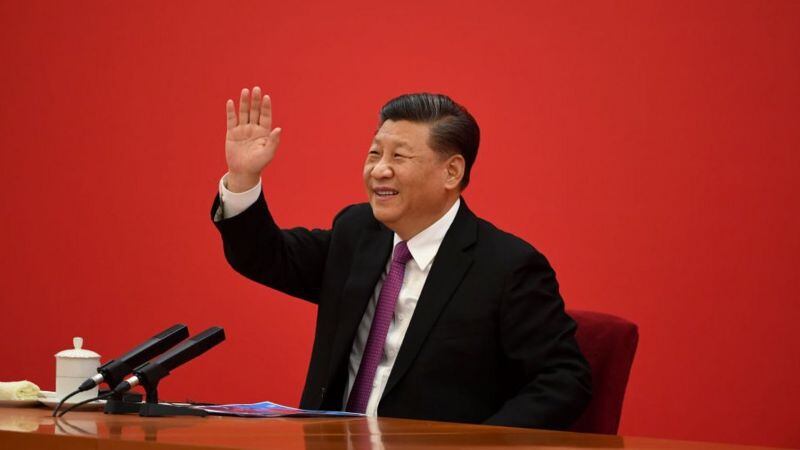When Mikhail Gorbachev visited Beijing in May 1989 for the first Sino-Soviet summit in 30 years, the world’s two largest communist states faced historic crossroads.
In Tiananmen Square in that city, students and workers called for democratic reforms, in protests described as the greatest challenge to the communist state in China since the 1949 revolution.
Gorbachev, for his part, promoted political and economic transformations in the Soviet Union (USSR) that, in fact, inspired many of the protesters in Beijing.
However, a few months later that same year, the surprise collapse of the USSR would begin with the fall of the Berlin Wall that separated the world between East and West.
Instead, the Chinese Communist Party (CCP) settled its internal divisions over how to respond to domestic protests with a victory for its hardliners, and the ensuing massacre of protesters in Tiananmen shook the world.
This Thursday, the same CCP celebrates the centenary since its founding in 1921 established as one of the most powerful political parties on the planet, with an influence that has even reached Latin America.
Far from considering this outcome as fortuitous, experts observe crucial differences between Chinese and Soviet communism that explain why one survives in power while the other disappeared.
“The interesting thing is that, although both the Soviet and Chinese systems adopted the form of the Leninist party as the main political vehicle, in the USSR this led to atrophy and sclerosis, while in China remains an adaptable and flexible organization”, Says Anthony Saich, professor of international affairs at Harvard University.
“Reinvent yourself to survive”
After its founding and even taking power under the leadership of Mao Tse Tung, the CCP developed a local revolution with its own characteristics for almost three decades.
Saich, author of the book “From Rebel to Ruler: 100 Years of the Chinese Communist Party,” points out that this gave the group experience in handling different environments before exercising power and represents a major difference with the Soviet Communists.
From then on, the People’s Republic of China led by Mao went through several stages, from “The Great Leap Forward” to industrialize the economy until the “Cultural Revolution” to take down political rivals.
Millions of people died in those periods, mainly from famine following a food shortage between 1959 and 1961, but also as a result of political persecution unleashed in 1965.
However, Saich points out that the CCP “was able to reinvent itself to survive those traumas that would have brought down almost any other party” and later demonstrated “be very flexible since 1978”With the reform and opening promoted by its leader Deng Xiaoping.
In his view, this Chinese pragmatism marked another difference with the USSR, which had already achieved greater industrialization when it ran into trouble and the “sclerosis” of the system thwarted Gorbachev’s economic reforms.

Soviet leader Mikhail Gorbachev visited China in May 1989, a challenging time for both communist states.
Mario Esteban, principal investigator at the Elcano Royal Institute, explains that after the changes implemented by Deng, the CCP combined the maintenance of a party-state regime with state capitalism.
“The capitalist system in China has had or has much more weight than it ever had in the USSR,” Esteban, who is also a professor of East Asian studies at the Autonomous University of Madrid, tells BBC.
The economic progress of the last decades allowed China improve the quality of life of its population and the CCP avoid new protests like those in Tiananmen, even without implementing democratic reforms like Gorbachev’s.
In recent times the current Chinese president, Xi Jinping, has made it clear that he is determined to maintain the power of the CCP with a lack of space for dissenting opinions, just as the USSR did during its existence.
The Latin American Paradox
Another difference that Esteban highlights between Chinese and Soviet communism is that the Maoist revolution relied more on the peasants than the Russian revolution, where the industrial proletariat was key.

Mao based his popular support on the Chinese peasantry.
On the other hand, after coming to power, Maoism promoted a more belligerent preaching against the West than the USSR, which advocated a “peaceful coexistence” within the Cold War, one of the factors behind the Sino-Soviet break in the decade of 1960.
Both the rural character of the Maoist revolution and the combative attitude of its leader towards the capitalist world made some leftists in Latin America would see China as a role model.
In fact, in the 1960s “pro-Chinese” communist parties emerged in Brazil, Bolivia and in all the countries of the South American Pacific coast.
Marisela Connelly, an expert in Chinese history from the Colegio de México who studied this phenomenon, argues that the countries in the region that had the most influence from Maoism are Colombia and Peru, where groups with this political tendency such as the Popular Liberation Army and Shining Path they respectively practiced armed struggle for decades.

Xi Jinping: During his presidency, China has increased its influence in Latin America.
During the Cold War, Connelly explains to BBC Mundo, China gave organizations in the region aligned with its communist party some ideological support, agricultural cooperation and in some cases guerrilla training.
But the CCP’s influence was much greater in other regions, starting with Southeast Asia, and no Latin American Maoist group reached power or was close to it.
On the other hand, without being seen as an ideological or revolutionary model, in the last 20 years China achieved an unprecedented influence in Latin America with its growing economic power, becoming a key commercial and financial partner in the region.
“The interesting thing is also that Latin American countries are now seeing China as an option, despite what this asymmetric relationship is taking place economically,” reasoned Connelly.
“It’s like another paradox in history”.

:quality(75)/cloudfront-us-east-1.images.arcpublishing.com/elcomercio/4HWID7AZQNCJRP742JECNPNH54.jpg)